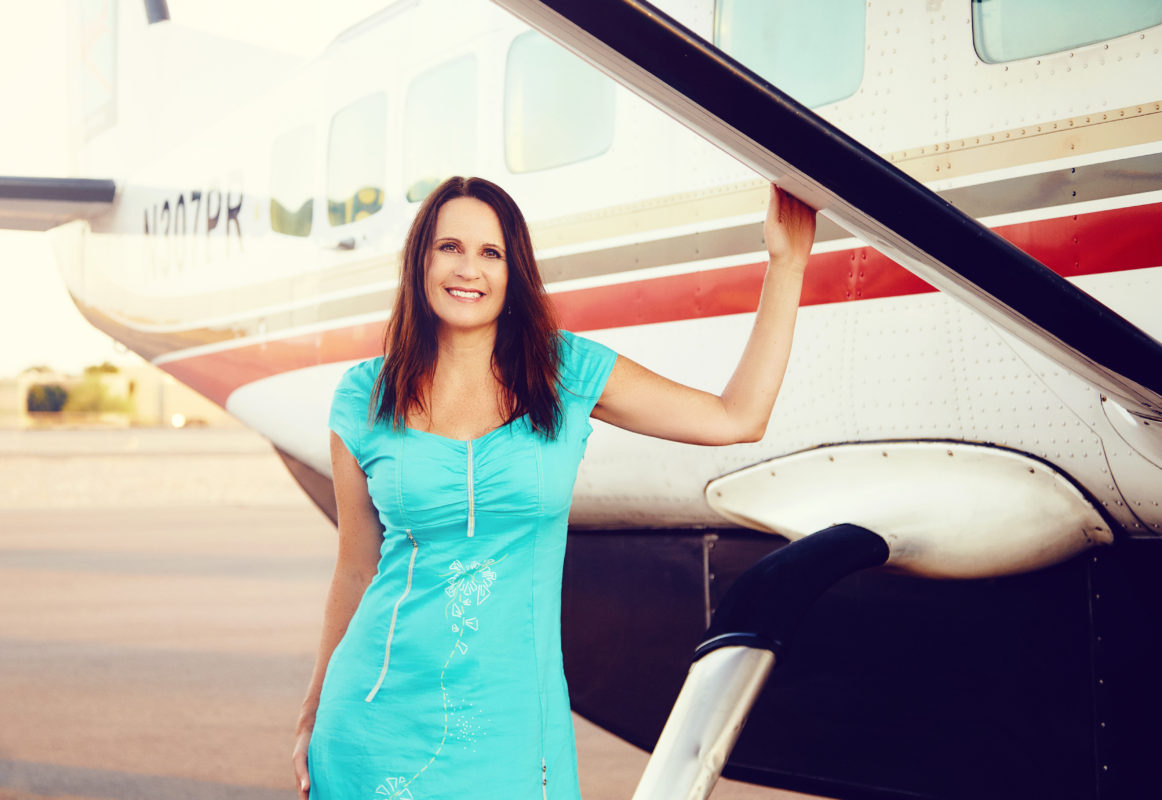Dog is my copilot

Writer Peni Long
Photography Brandon Tigrett
[dropcap]W[/dropcap]ith a magnanimous mission and a memorable name, Dog Is My Copilot (DIMC) has saved thousands of animals’ lives, flying abandoned pets to new furever homes across the country. Combining their talents and a shared passion for helping the helpless and bringing hope and happiness to animals and families, DIMC co-founders Judy Zimet and Peter Rork have created a process to identify and retrieve unwanted animals in one part of the country and fly them to other states with a greater demand for adoptable pets. It’s a job that requires dedication, coordination and, of course, funding, but it’s one that has resulted in saving more than 4,000 animals since June 2012 — a number that is amazing in itself, but even more meaningful when compared to the estimated 10,000 animals euthanized daily across the United States because no one in their home area wants them.
For Zimet and Rork, it’s all about making a bigger dent against that number.
“By understanding the markets and orchestrating the right connections, we can find and fly adoptable passengers to new, welcoming cities and towns,” Zimet says. “Sometimes, it all happens within hours of scheduled euthanasia.”
In her “real job,” Zimet is a real estate and contract attorney based in Scottsdale as well as a real estate agent, but she is also a longtime supporter of animal welfare groups and uses her skills to serve as DIMC’s ground control, media coordinator and organizer. Rork lives in Wyoming and is retired from the medical field. He is now DIMC’s pilot and navigator.
“He just wanted to fly planes and be with dogs,” Zimet says. Longtime friends who are both widowed, Zimet and Rork now use their considerable skills working with each other across state lines in a unique business model that finds, relocates and saves animals.
Zimet’s job begins with finding the nonprofits and shelters who have an overabundance of adoptable pets within the flight range of the group’s two planes, a Cessna 206 Stationair and a Cessna 208B Grand Caravan. From there, the process involves ensuring that animals have been screened by medical personnel and have medical certificates, and arranging transportation to a designated airport for loading in crates suitable for flying.
“There is no ‘typical’ flight,” says Zimet. “I create flights based on needs from both the origination and destination shelters, flight costs and pilot time. I work the information like a puzzle in order to save the most animals with the most economic fuel cost, the most humane hours for the pilot and the needs of the many animal rescue groups who contact me.”
DIMC transports anywhere from 40 to 150 animals on one flight, which costs about $2,000. Considering fuel, hangar costs and insurance, it generally costs about $75 per animal. But Zimet says it makes sense — and cents.
“Flying an animal to safety has to be less expensive, or equal to, the cost of housing that same animal in an overcrowded shelter and then euthanizing the animal,” she explains. “The animals we fly are adopted faster because they are placed in areas where those animals are in high demand. Therefore, the shelters expend fewer resources to care for these animals and euthanasia costs are eliminated.”
Some areas of the country have an abundance of large dogs, for example, but adopters want small ones; other areas have the reverse situation, so it’s a matter of matching the two.
The DIMC routes cover 11 states in the Rocky Mountain and Pacific regions. From her Scottsdale home office, Zimet organizes the flight plan from an airport closest to the home base of the animals needing new homes to an airport closest to their destination. The planes have the ability to fly into not only commercial airports, but also onto small local airstrips. This way, animals coming from or going to rural areas have a greater opportunity to reach a new home because DIMC can access smaller local airstrips.
As an example of the strategy and complexity of flight planning, the Scottsdale flight depicted in the photos in this article originated two days prior in Montana, where DIMC houses its airplanes. The flight went from Montana to Roswell, New Mexico, where the pilot stayed overnight. The next morning, 95 animals were boarded and flown from Roswell to Denver, where half deplaned, and then on to a Salt Lake City suburb where the remaining deplaned. The pilot then flew to Scottsdale for an overnight stay.
The following morning, Phoenix HALO Animal Rescue brought 40 dogs to board the plane, which then flew to Casa Grande, where Pinal County Animal Control added 14 more dogs. The 54 animals were then flown to Boise, Idaho, and were met by All Valley Animal Care Center and Idaho Humane Society personnel. From Boise, the pilot flew to Merced, California, where he spent the night. The next morning, a record 127 cats and dogs climbed on board and were flown to Scappoose, Oregon and Everett, Washington.
“This trip is not really unique,” Zimet notes. “We plan each trip carefully around meeting the demand on both ends of each segment. Volunteers meet and greet, and our furry cargo is off to find new families, sometimes within hours of being deplaned. All Valley had an adoption event right after we landed and many were immediately adopted.”
From logistics and planning in Arizona and flights originating in Montana, Zimet and Rork continue to find, fly and save animals from being euthanized in a seemingly endless cycle. They have even higher goals this year because one of the two planes recently purchased is a bigger model. With it, Zimet says, “We expect to increase the number of animals transported from 1,000 to 3,000 per year — 2,000 more animals a year finding new furever homes with happy families.”
So Zimet will be even busier locating, planning, arranging and communicating — filling a need that many of us had no idea even existed.



